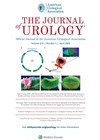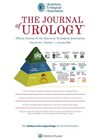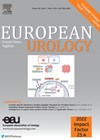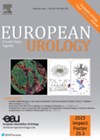
Journal Reviews
How can we reduce morbidity after RARC with intracorporeal neobladder?
Robot-assisted radical cystectomy (RARC) is a complex procedure with high postoperative morbidity, especially when combined with neobladder reconstruction, which has a higher complication rate compared to other urinary diversions. To minimise these complications, it is crucial to understand their nature...
Predicting resolution of the primary obstructed megaureter
Primary obstructive mega ureter (POM) is the congenital dilatation of the ureter in the absence of other structural urinary tract anomalies and comprises 10–20% of prenatal hydronephrosis cases. It is often detected during workup for prenatal hydronephrosis and confirmed using...
First and second-line treatments in metastatic renal cell carcinoma
Over the past two decades, the treatment landscape for metastatic renal cell carcinoma (mRCC) has evolved significantly, leading to a quadrupling of patient survival rates. Modern systemic treatments include combinations of anti-PD-1 antibodies with either anti-CTLA-4 antibodies or antiangiogenic tyrosine...
PSA screening in limbo: how low should we go?
One may wonder how the management of prostate cancer could have evolved differently if it had followed a path similar to breast cancer. In breast cancer, early detection in the 1970s relied heavily on imaging because no reliable circulating biomarker...
Treatment options for renal cell carcinoma
In this issue of European Urology, experts review advancements and challenges in treating renal cell carcinoma (RCC), emphasising the complexity of managing a disease with an expanding array of therapeutic options. Despite significant progress, critical questions remain about treatment sequencing,...
Antibiotics and HoLEP
Holmium laser enucleation of the prostate (HoLEP) is an increasingly done size-independent surgical treatment for benign prostatic hypertrophy. There is currently a lack of data on perioperative antibiotic prescribing patterns for HoLEP and thus, no consensus on optimal practices. This...
Using bladder diary data to tailor treatments for night wetting
Primary nocturnal enuresis affects 10–16% of seven-year-old children and has a social, emotional and psychological impact on the affected child. Pathogenesis involves abnormal bladder reservoir function, nocturnal polyuria and an inability to wake up before emptying of the bladder. Desmopressin...
Sepsis – still a dilemma
Thousands of people die each year in the UK and worldwide due to types of sepsis, including urosepsis. Urologists are facing this scenario day in day out, so this is a vital article for every reader. We are all familiar...
Keep it simple: a proposal for a new definition of uncomplicated and complicated UTIs
Urinary tract infections (UTIs) are one of the most common bacterial infections in both community and healthcare settings, leading to frequent antibiotic use. They range widely in severity, from mild cases like cystitis to severe, potentially life-threatening conditions such as...
Effect of DUA on surgical outcomes of HoLEP
Lower urinary tract symptoms (LUTS) become increasingly common in men as they age, with over 70–90% of men aged over 80 experiencing these issues. Detrusor underactivity (DUA) is characterised by a weakened bladder contraction, leading to prolonged or incomplete bladder...
How to handle the opening market in robotic surgery
In the latest edition of European Urology, Thillou et al. present a groundbreaking case series comprising 10 instances of robotassisted radical prostatectomy (RARP) procedures conducted using the innovative Dexter robotic system by Distalmotion SA, Épalinges, Switzerland. This marks the maiden...
Transurethral en bloc resection versus standard resection of bladder tumour
Bladder cancer is a common urological malignancy, with around 610,000 new cases and 220,000 deaths worldwide in 2022. Approximately 75% of these cases are non-muscle-invasive bladder cancer (NMIBC). The conventional method for treating NMIBC is standard resection (SR), performed transurethrally,...












